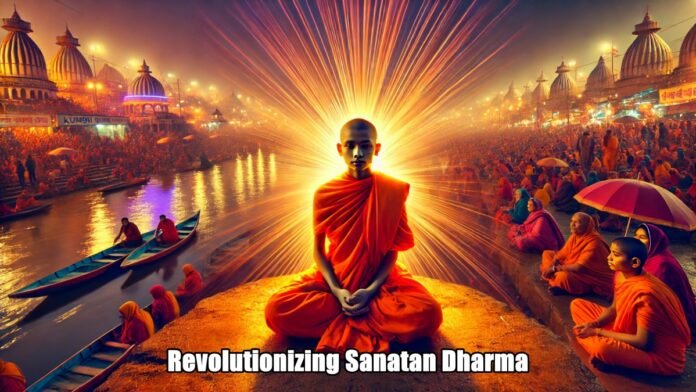
Dr.Ashutosh Upadhyay
Key Highlights:
- An IIT graduate turned saint challenges traditional Hinduism with scientific reasoning at the Maha Kumbh in Prayagraj.
- Explains complex concepts like Vedic Panch Kosh, consciousness, and the universe’s origin in layman’s terms.
- Youth resonate with his modern approach to Sanatan Dharma, sparking debates within the spiritual community.
- Raises questions about whether traditional religious leaders will embrace or resist this progressive ideology.
In the spiritual heartland of Prayagraj, amidst the grand festivities of the Maha Kumbh, a revolutionary figure known as the “IITian Baba” has become the center of intense discussions. With a modern and analytical approach to Sanatan Dharma, this young saint is challenging age-old beliefs, drawing admiration from the youth while stirring unease among the traditional saint community.
Scientific Lens on Sanatan Dharma
The IITian Baba has captivated audiences by dissecting the philosophies of Hinduism with scientific precision. Whether delving into the Vedic concept of Panch Kosh (the five sheaths of existence) or explaining the evolution of consciousness from singularity to multiplicity, he communicates these profound ideas in simple, relatable language.
His lectures bridge the gap between spirituality and religion, presenting Sanatan Dharma as a philosophy aligned with rational thinking rather than mere mysticism. This approach resonates with the tech-savvy and inquisitive minds of today’s youth, who seek logical interpretations of ancient scriptures.
Youthful Resonance: A Paradigm Shift
The reaction from younger generations is overwhelmingly positive. Comments and discussions sparked by the IITian Baba’s talks reveal a growing desire for an updated understanding of spirituality one that aligns with modern scientific paradigms. For many, he represents a continuation of the legacy left by Swami Vivekananda, presenting Hindu philosophy as a universal, inclusive, and rational path.
Resistance from Traditional Quarters
However, the IITian Baba’s rise is not without challenges. Established religious leaders and traditionalists have expressed skepticism and, in some cases, outright opposition. There is concern that his progressive views may undermine long-held traditions and doctrines. Some fear he could be branded as heretical or “mad” under the pretext of adhering to scriptures.
A Call for Evolution in Religious Thought
Change, as the IITian Baba emphasizes, is the law of nature. He argues that Sanatan Dharma itself champions evolution and adaptability, making it imperative to reinterpret ancient wisdom to suit contemporary contexts. If embraced, his vision could transform Indian philosophy from being seen as mystical dogma to a practical guide for personal and societal well-being.
A New Era for Indian Philosophy?
The IITian Baba’s movement symbolizes a broader shift in how spirituality is perceived and practiced in India. His fusion of science and spirituality has the potential to position Indian philosophy as a beacon of wisdom for addressing modern challenges. The question remains: will traditional authorities embrace this evolution, or will they resist it in fear of losing their established authority?
As debates continue, one thing is clear the IITian Baba has sparked a wave of introspection and dialogue. Whether his vision succeeds in reshaping the future of Sanatan Dharma will depend on society’s ability to balance respect for tradition with the inevitability of change.
In his words, “Sanatan Dharma is not static; it is dynamic. Its beauty lies in its ability to adapt and thrive in every age.” If this philosophy prevails, it could herald a new golden age for Indian spirituality, one rooted in both faith and reason.
















































